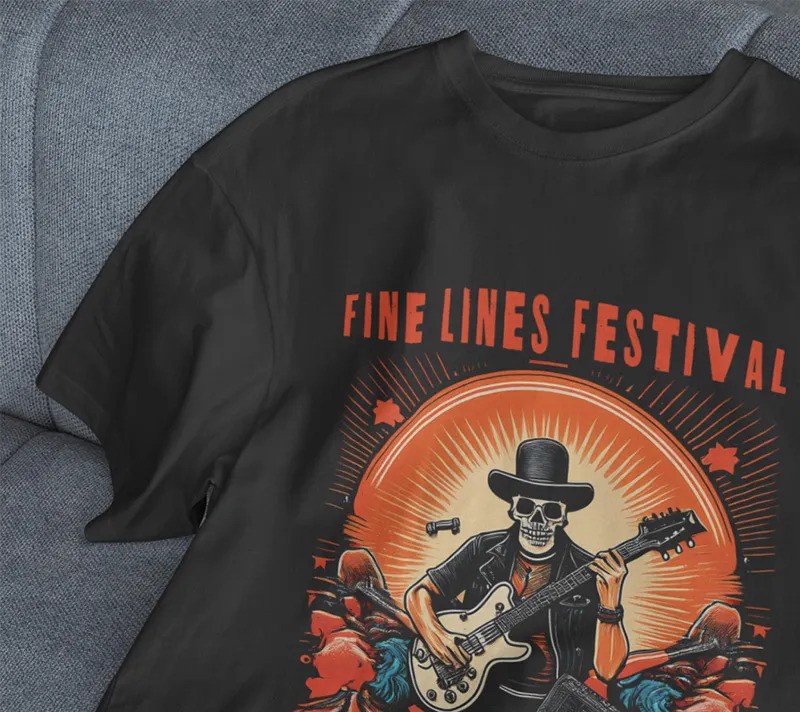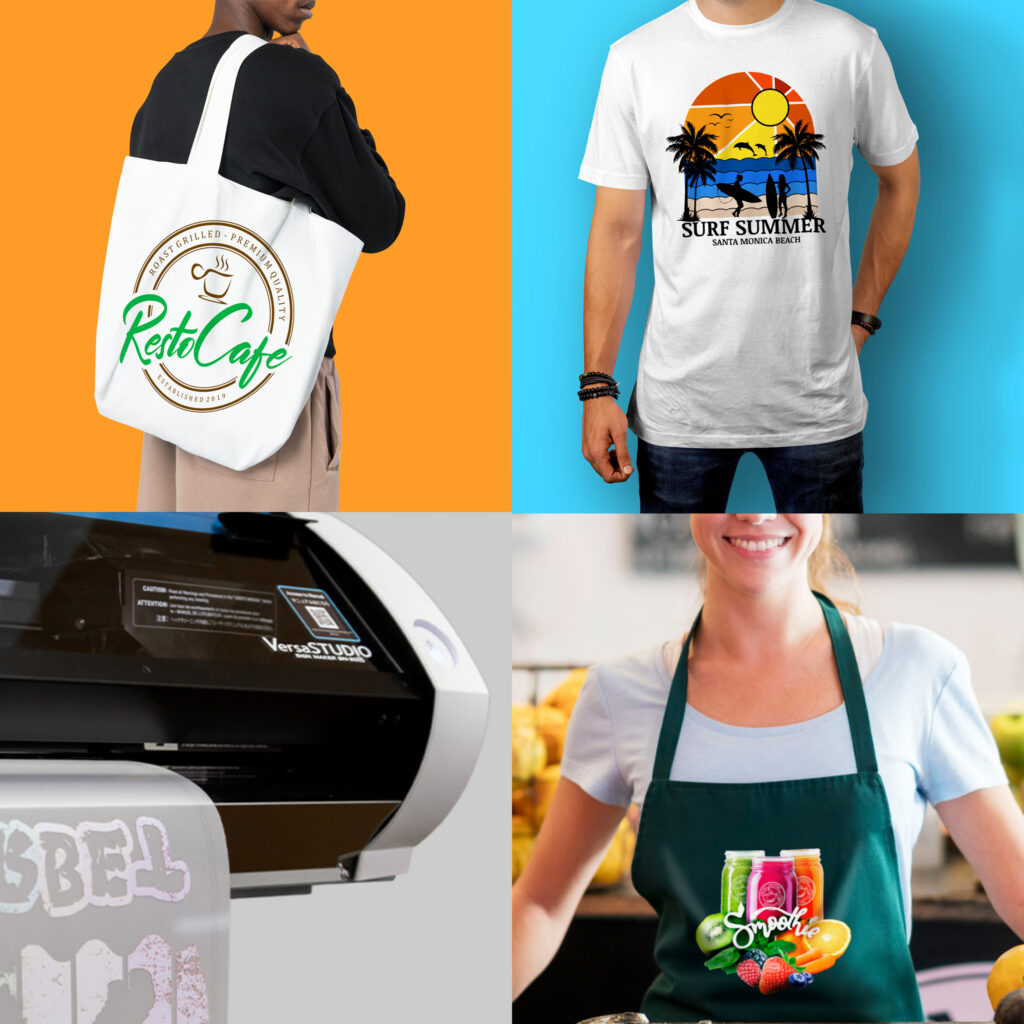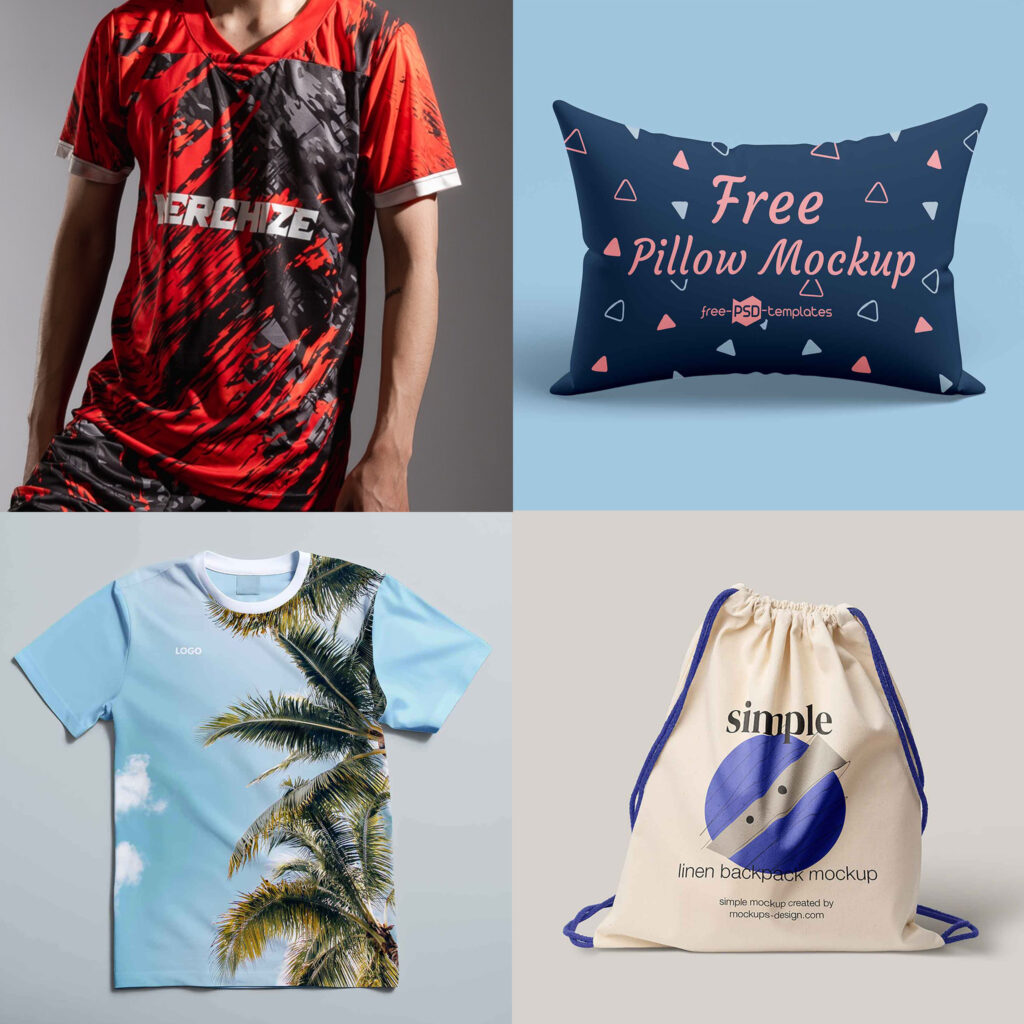Tag: textile printing
Printing 101: How Does DTF Printing Work?
Custom apparel printing has evolved significantly over the years, with new technologies making producing high-quality, durable prints on a wide range of materials easier. One of the most innovative and versatile methods gaining popularity today is Direct-to-Film (DTF) printing. This technique offers an efficient way to transfer detailed designs onto various fabrics, making it an excellent choice for businesses and entrepreneurs in the custom printing industry. In this article, we will explore how DTF printing works, its process steps, and why it has become a preferred method for many garment decorators.
What is Direct-to-Film (DTF) Printing?
Direct-to-Film (DTF) printing is a digital heat transfer process that allows designs to be printed onto a specialized film and then transferred to fabric or other materials using a heat press. Unlike Direct-to-Garment (DTG) printing, which applies ink directly onto the fabric, DTF printing works with a printed film that can be stored or applied at a later time. This method provides excellent print durability and is suitable for a variety of fabrics, including cotton, polyester, blends, and even non-textile materials like leather.
The key advantage of DTF printing is its ability to produce vibrant, long-lasting designs on almost any fabric without requiring pre-treatment. It is particularly useful for businesses looking for a cost-effective way to create high-quality prints with minimal setup and waste.
The DTF Printing Process
DTF printing involves several key steps that work together to ensure high-quality and durable transfers. Below is a step-by-step breakdown of how DTF printing works:
Step 1: Design Preparation
The process begins with preparing a high-resolution digital design using graphic design software such as Adobe Photoshop, Illustrator, or CorelDRAW. The design must be created in CMYK mode to ensure accurate color reproduction. Additionally, the background of the design should be transparent, especially if the film is being used on dark-colored garments.
Step 2: Printing the Design onto DTF Film
Once the design is ready, it is printed onto a PET (polyethylene terephthalate) film using a DTF printer equipped with specialized DTF inks. These inks typically include CMYK colors as well as white ink, which acts as a base layer to enhance color vibrancy on dark fabrics.
The printing process involves two key layers:
- Color Layer – The design is printed in full color, using CMYK inks to capture details and vibrancy.
- White Ink Layer – A layer of white ink is printed over the color layer to ensure the design remains visible and opaque when transferred to darker fabrics.
Step 3: Applying Adhesive Powder
After printing, a special DTF adhesive powder is applied to the printed film while the ink is still wet. This powder serves as the bonding agent that allows the design to adhere to the fabric during the heat transfer process. The powder must be evenly distributed to ensure proper adhesion.
Once applied, the excess powder is shaken off, leaving only a thin, even layer covering the design.
Step 4: Curing the Adhesive Powder
To activate the adhesive powder and prepare the film for transfer, it is heated using a curing oven or a heat press set at a low temperature. The curing process ensures that the powder melts and forms a solid bonding layer over the design. Proper curing is crucial to achieving a durable and flexible print.
Step 5: Transferring the Design to Fabric
Once the film is cured, it is placed onto the fabric with the design facing down. Using a heat press, the design is transferred to the fabric by applying high heat (typically around 160-180°C) and pressure for about 10-15 seconds.
During this process, the ink and adhesive bond permanently to the fabric, ensuring that the design is securely fixed to the material.
Step 6: Peeling the Film
After the heat press cycle, the PET film is carefully peeled away from the fabric, leaving the design fully transferred onto the garment. Depending on the type of film used, this peeling process may be done while the material is hot (hot peel) or after it has cooled down (cold peel).
Once peeled, the garment may undergo a final heat press for a few seconds to enhance durability and ensure a soft, smooth finish.
Why Choose DTF Printing?
DTF printing has gained popularity due to its numerous benefits over traditional printing methods like screen printing, DTG, and heat transfer vinyl. Here are some reasons why businesses and print shops are investing in DTF technology:
1. Works on a Variety of Fabrics
Unlike DTG printing, which works best on cotton, DTF printing can be used on multiple fabric types, including cotton, polyester, silk, denim, leather, and more. This makes it a versatile option for businesses that want to expand their product offerings.
2. No Need for Fabric Pre-Treatment
DTF printing does not require fabric pre-treatment, which is a necessary step in DTG printing for dark-colored garments. This simplifies the workflow and saves both time and resources.
3. High-Quality, Durable Prints
DTF prints are known for their durability, wash resistance, and flexibility. The adhesive powder used in the process ensures strong bonding, resulting in prints that do not crack, peel, or fade easily.
4. Cost-Effective for Small and Large Runs
DTF printing is cost-efficient for both small and large orders. Unlike screen printing, which requires expensive setup costs for multiple colors, DTF allows for full-color prints without additional setup fees. This makes it ideal for on-demand printing and custom apparel businesses.
5. Ability to Print and Store Transfers
One unique advantage of DTF printing is that printed films can be stored for later use. Businesses can print designs in bulk and transfer them to garments as needed, reducing waste and streamlining production.
6. Easy to Learn and Use
DTF printing is user-friendly and does not require extensive technical knowledge. With the right equipment and training, businesses can quickly integrate DTF technology into their operations and start producing high-quality custom prints.
Best Direct-to-Film Printer in 2025
Roland DG has released some of the latest and most innovative Direct-to-Film printers: the Roland VersaStudio BY-20 and the Roland DTF Printer TY-300.
Roland VersaStudio BY-20
The Roland VersaStudio BY-20 is a highly versatile desktop device ideal for a range of direct-to-film apparel applications, such as creating custom T-shirts, sportswear, tote bags, and more. With its compact design, it is even perfect for small businesses that have small production spaces.
Further reading: Introducing The Roland VersaSTUDIO BY-20 Desktop Direct-to-Film Printer
Roland DTF Printer TY-300
The Roland DTF Printer TY-300 is the latest, next-generation direct-to-film printer released by Roland DG. Designed for exceptional graphic quality and vibrant designs, the TY-300 simplifies the process of creating heat transfers on various materials such as cotton, polyester, denim, nylon, rayon, and more.
Whether you’re personalizing apparel or textiles, this cutting-edge printer delivers vivid colors, sharp text, and intricate details while optimizing cost efficiency, speed, and usability—raising the bar in DTF printing technology. The TY-300 is an essential part of Roland DG’s complete DTF solution, which includes RIP software, DTF film and powder, and an optional shaker/heater unit for smooth, automated DTF transfer production.
Further reading: Introducing Roland TY-300 Direct-to-Film Printer
Direct-to-Film (DTF) printing is revolutionizing the custom printing industry with its versatility, durability, and cost-effectiveness. By allowing businesses to print vibrant, long-lasting designs on a wide range of fabrics without the need for pre-treatment, DTF printing provides an efficient and profitable solution for custom apparel and promotional products. Whether you are starting a new printing business or looking to expand an existing one, investing in DTF printing can offer significant advantages in today’s competitive market.
Are you a business owner looking to elevate your apparel customization game? Consider investing in direct-to-garment printing machines. Contact us today to explore your options and take the first step toward enhancing your business with the latest in t-shirt printing technology. Let’s turn your creative vision into a colourful, wearable reality!













